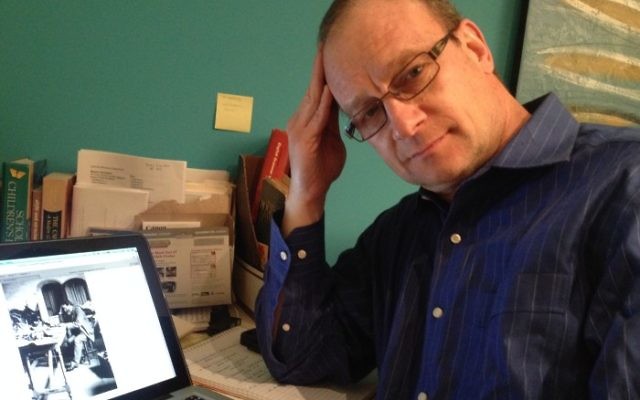Where was Jewish Community on Yom HaZikaron?
Dave remains mystified by the relatively low turnout by Jewish Atlantans at a ceremony of such importance to the local Israeli population.
Dave Schechter is a veteran journalist whose career includes writing and producing reports from Israel and elsewhere in the Middle East.
Each year that I attend the annual Yom HaZikaron ceremony, I have the same question.
Why do relatively few from outside the local Israeli community attend?
On Yom HaZikaron, Israelis mourned their nation’s 25,050 fallen military and security personnel since 1948, as well as 5,100 victims of terrorism. The next day, on Yom HaAtzmaut, Israelis marked the founding of the modern state of Israel on May 14, 1948.
I remain mystified as to why Atlanta’s Jewish community turns out in significant numbers for “pro-Israel” rallies, but much less so for the Yom HaZikaron ceremony, an event with profound importance for the local Israeli population.
Such was the case again the evening of May 12, when 1,600 people, most wearing white as a sign of mourning, turned out at the Ahavath Achim Synagogue.
“This year is not like any other year,” Rabbi Joshua Heller of Congregation B’nai Torah said in his role presenting the Yom HaZikaron program. “This year we are all bereaved.”
Yom HaZikaron was particularly painful because of the Hamas-led terror attacks Oct. 7 on kibbutzim, towns, and a music festival in an area of southern Israel known as the “Gaza envelope,” in which 1,200 people (two-thirds of them civilians) were killed and 240 kidnapped.
For all of the outrage displayed in the days and weeks following that horror, seven months later the larger Jewish community conveyed a no doubt unintended, but still unfortunate, indifference to the communal pain of an estimated 12,000 to 15,000 Israelis living in metro Atlanta.
It has been noted many times, that in a country the size of Israel, the likelihood of knowing the family of a soldier killed in war or the family of a victim of terrorism is far greater.
As I have in the past, I stationed myself at the back of the sanctuary and listened to the voices of people entering and exiting. The congregation again was comprised primarily of Hebrew speakers. To be fair, this year I heard a touch more English, most of it coming from clergy and leaders of various local Jewish organizations and people with familial connections to the Israeli community.
I have checked my annual observation with American friends who also hold Israeli citizenship and are attuned to the sensitivity of this issue.
One of them told that over the years she has heard members of the Israeli community voice upset at the relatively small number of non-Israelis who attend the Yom HaZikaron observance.
The disconnect between Atlanta’s larger Jewish community and the Israelis is never more evident than at the Yom HaZikaron observance.
On Oct. 11, four days after the terror attacks, a rally in Sandy Springs drew an estimated 3,500 to 4,000 people, packing the City Springs Theatre and the lawn outside.
On Oct. 30, some 1,300 people came to Ahavath Achim for a rally in support of the hostages kidnapped three weeks earlier.
On both occasions, there was a noticeable turnout of Israelis, joining with the general Jewish community.
“American Jewish organizations have not done the best job in making sure that their constituencies are aware of Yom HaZikaron. As you saw over the past seven months, Jewish organizations reached out to all of their constituents for Oct. 7 events. The community needs to take the same approach to Yom HaZikaron, ensuring that there is greater awareness of this important commemoration,” a dual national who has organized such events said.
Those attending the Yom HaZikaron ceremony were confronted with reminders of the Oct. 7 tragedy before entering the sanctuary.
Planted in a courtyard outside were individual photographs of the remaining 132 hostages, of whom nearly 40 are believed to be dead.
In an inside social hall were displayed 29 boards with pictures of nearly all of those murdered on Oct. 7. Nine other boards carried pictures of Israel Defense Forces casualties since the beginning of the ground war in Gaza Oct. 27.
The Yom HaZikaron program ended with a parade by Israeli Scouts carrying the Israeli flag and the singing of “Hatikvah,” the national anthem.
Among the somber faces as the congregation departed were several either crying or wiping away tears. And the language heard as people filed out was overwhelmingly Hebrew.
Looking to next year, those in the larger Jewish community who profess to support Israel can recognize the importance of the Yom HaZikaron ceremony for the local Israeli community by turning out in greater numbers.




comments